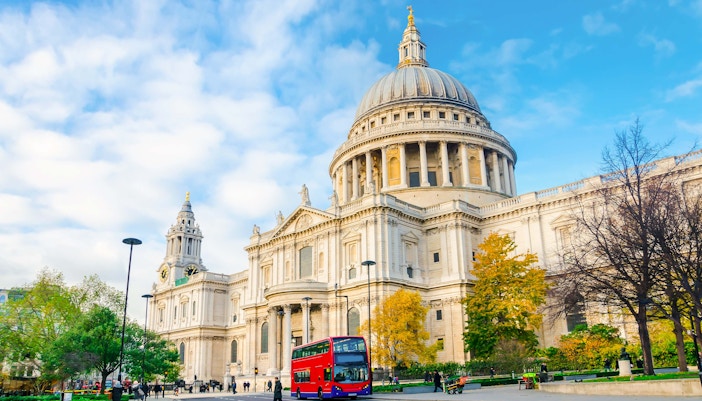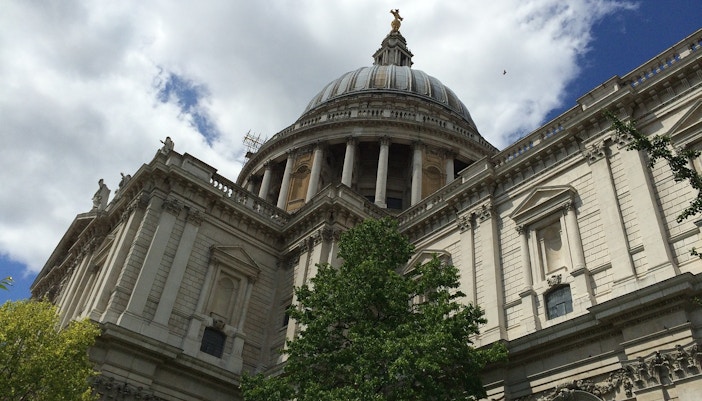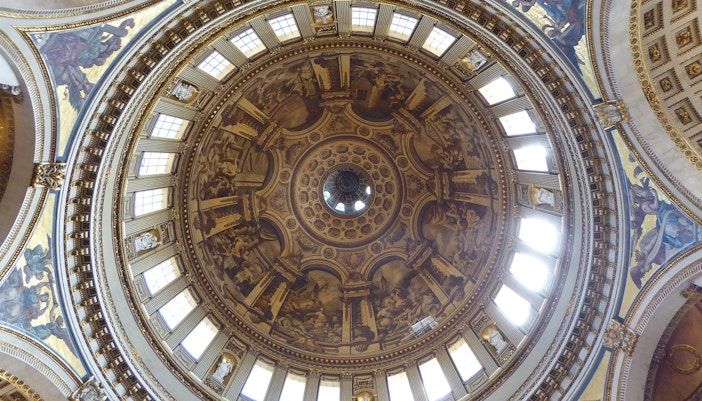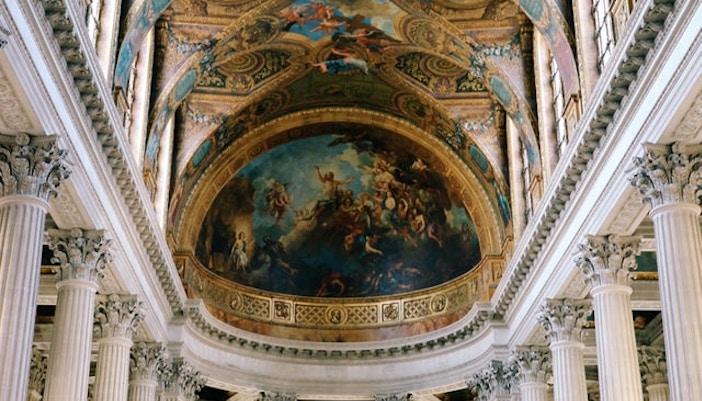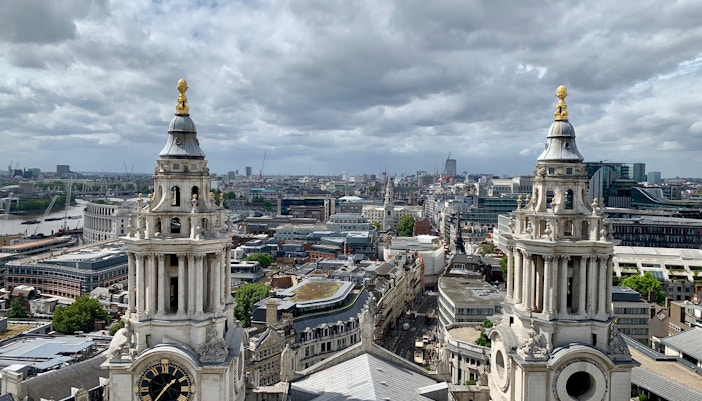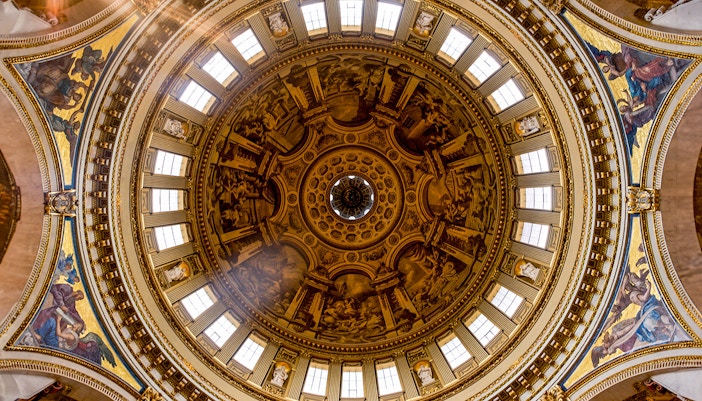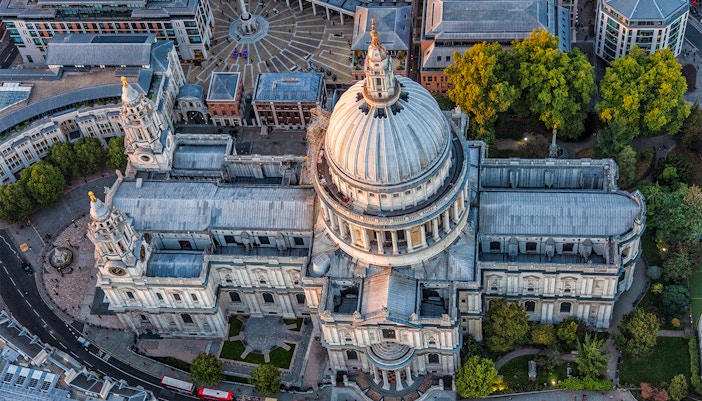Religious importance aside, the Anglican St Paul's Cathedral (the largest cathedral in England) is a site tourists from far and near visit because of its Renaissance and English Baroque architecture styles. Sir Christopher Wren created the cathedral's famous 'three nested domes' — a hemispherical outer dome to dominate the skyline, a steeper inner dome, and a hidden middle dome. The dome was an entirely new architectural form before Wren's creation! Inspired by contemporary Renaissance trends in Italian architecture and his precursor Borromini, Wren also incorporated Corinthian columns and towers in the facade.
St Paul's Cathedral architectural style
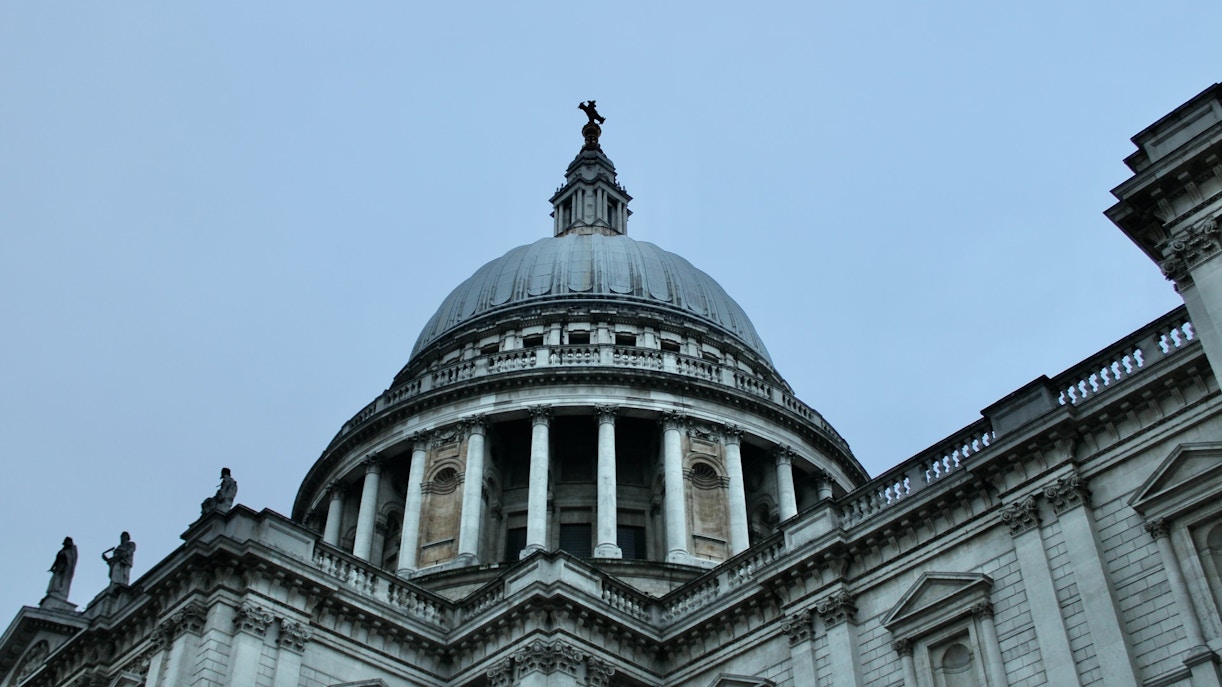
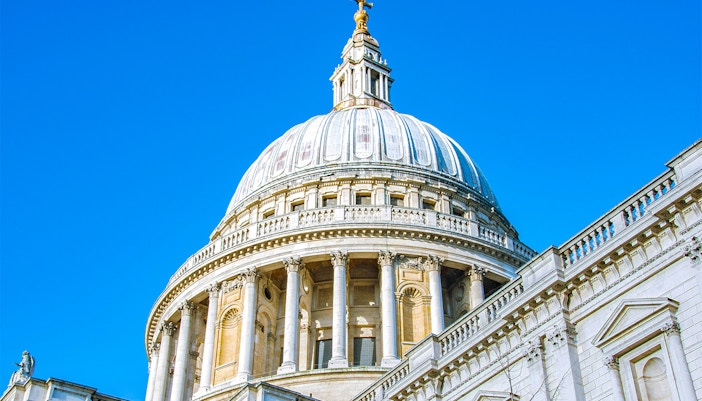
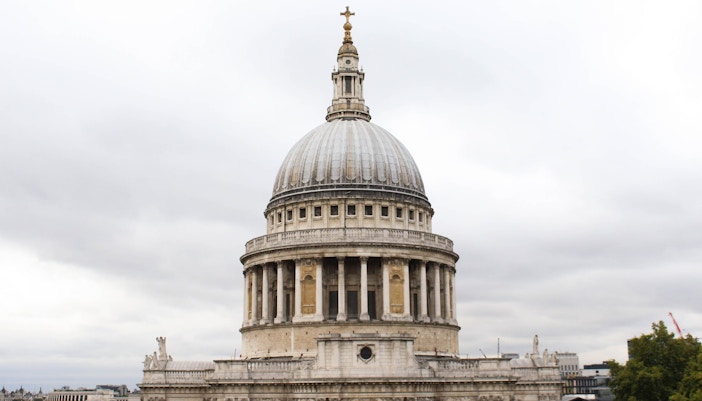
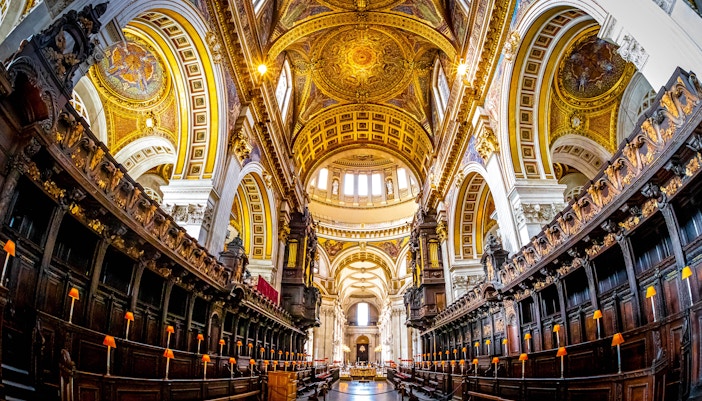
.jpg?auto=format&w=702.4499999999999&h=401.4&q=90&ar=7%3A4&crop=faces&fit=crop)
